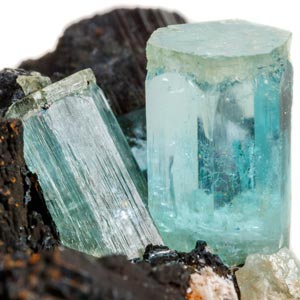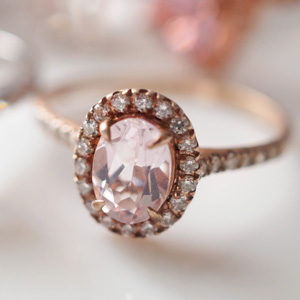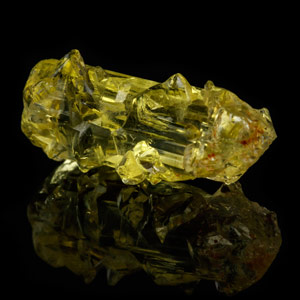beryl
Beryl, a gemstone species renowned for its dazzling diversity, derives its name from the Greek word "beryllos," signifying a precious blue-green stone. With a mineral composition of beryllium aluminium cyclosilicate, beryl encompasses a remarkable array of colours, each with its unique gemstone variety.
Originating from various corners of the globe, notable beryl deposits are found in Brazil, Colombia, Madagascar, and Afghanistan, among others. Its geological formation typically occurs in pegmatite veins within metamorphic rocks.
One of the most intriguing aspects of beryl is its stunning colour range, including the lush green of emerald, the serene blue of aquamarine, and the delicate pink of morganite. Additionally, beryl exhibits exceptional durability, making it a favoured choice for gemstone enthusiasts and jewellery designers alike.
Notably, emerald, the green variety of beryl, has held an esteemed place in history as a symbol of rebirth and fertility. Its allure continues to captivate, ensuring beryl's prominence in the world of fine gemstones.
Click on the terms in the table below to discover their meaning
Click on the terms in the table below to discover their meaning
| Name | Beryl |
|---|---|
| Category | Cyclosilicate |
| Chemical Formula | Be3Al2Si6O18 |
| IMA Symbol | Brl |
| Crystal System | Hexagonal |
| Crystal Habit | Prismatic to tabular; also radial, trapiche, columnar, granular to compact |
| Twinning | Rare |
| Cleavage | Poor |
| Fracture | Conchoidal to uneven |
| Tenacity | Brittle |
| Hardness (Moh's Scale) |
7.5 - 8 |
| Specific Gravity | 2.59 - 2.63 |
| Diaphaneity | Transparent to translucent |
| Colour | Colourless, white, pale blue to sky-blue, bluish green through green to greenish yellow or yellow, rose to peach, deep pink to raspberry-red; may be zoned; commonly colourless in thin section |
| Streak | White |
| Lustre | Vitreous to resinous |
| Optical Class | Uniaxial (-) |
| Refractive index | nω = 1.567 - 1.610 |
| nε = 1.565 – 1.599 | |
| Birefringence | δ = 0.004 – 0.007 |
| Dispersion | Rd = 0.014 |
| Pleochroism | Weak to distinct |
| Clarity | Type I (e.g. Aquamarine) or Type III (e.g. Emerald) |
| Notable Varieties | Aquamarine, Emerald, Heliodor (Golden Beryl), Green Beryl, Goshenite, Morganite, Maxixe, Bixbite (Red Beryl) |
References
Mineralogical Society of America. (2001). Beryl. In J. W. Anthony, R. A. Bideaux, K. W. Bladh, & M. C. Nichols (Eds.), Handbook of Mineralogy. Chantilly, VA 20151-1110, USA: Mineralogical Society of America. Retrieved from https://
The Gemology Project. (2007, December 21). Beryl. Retrieved from The Gemology Project: http://


